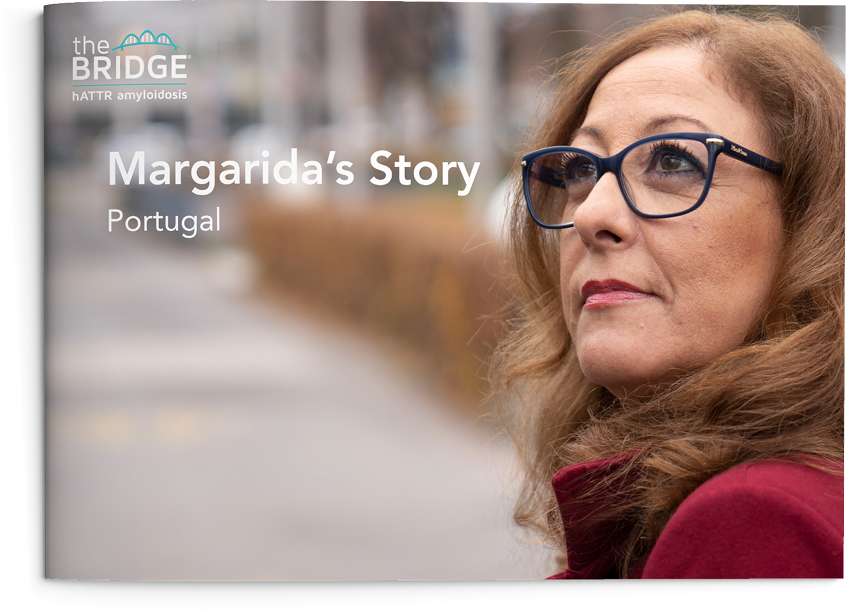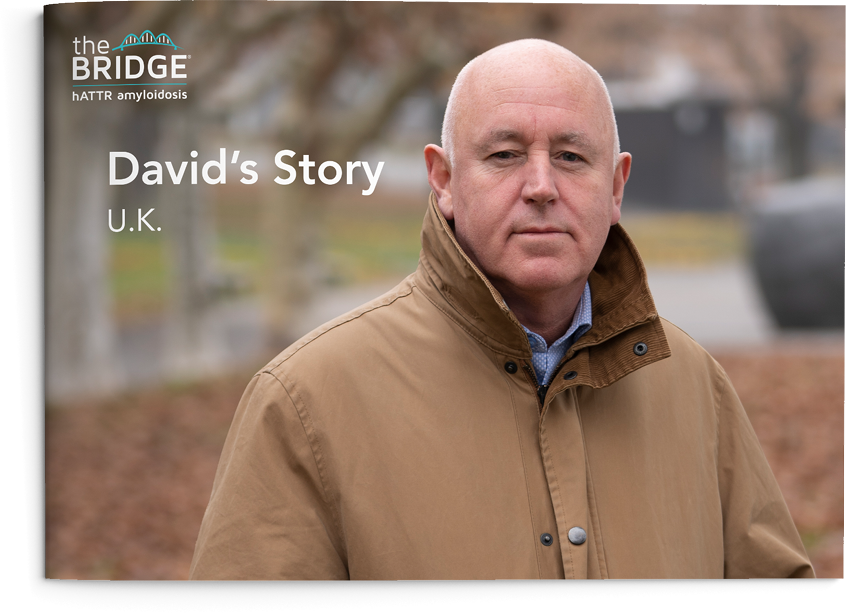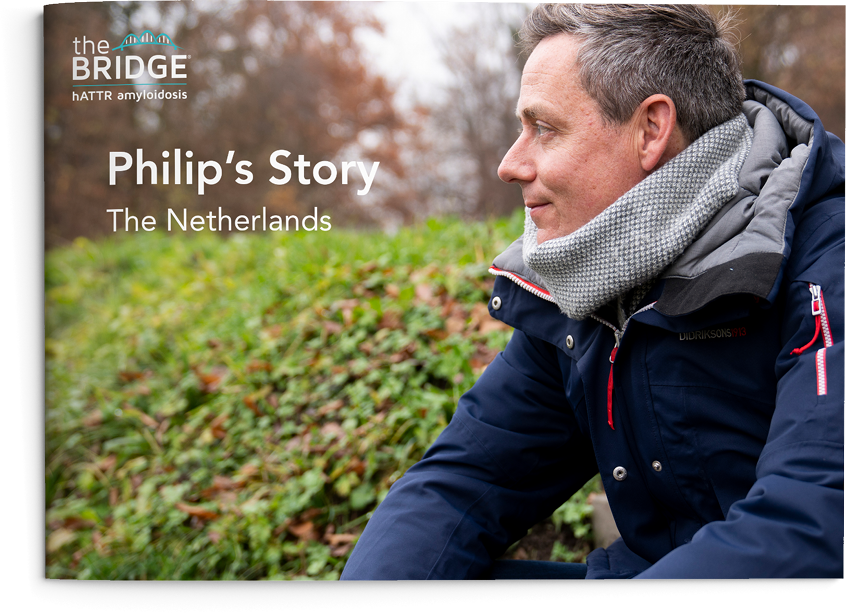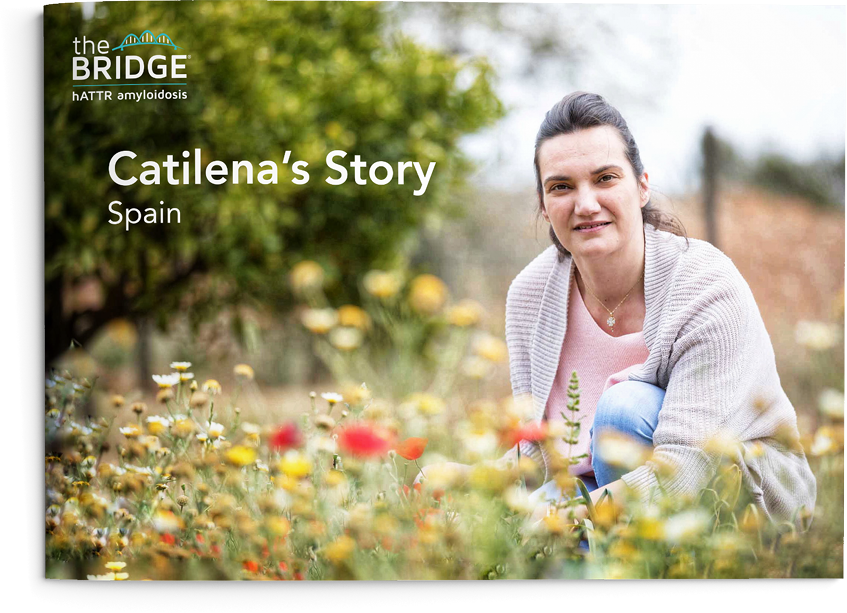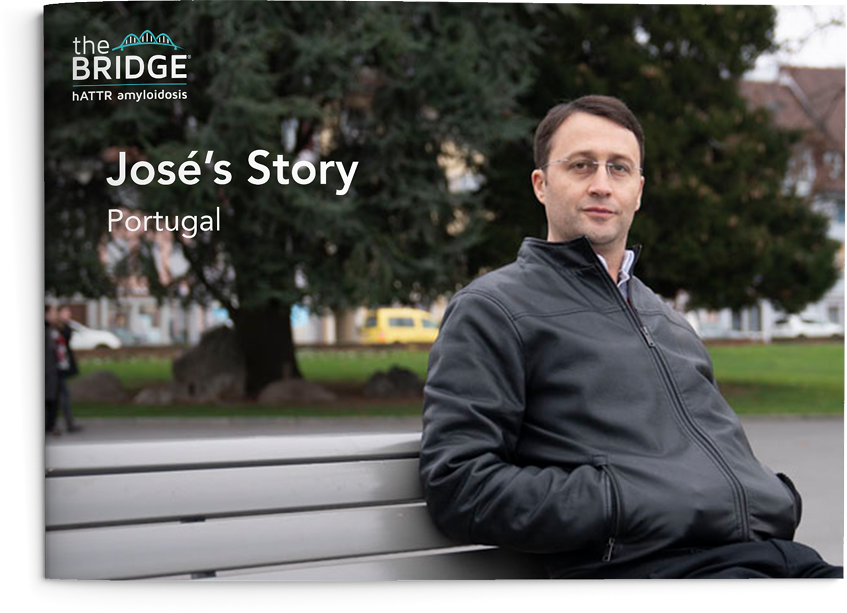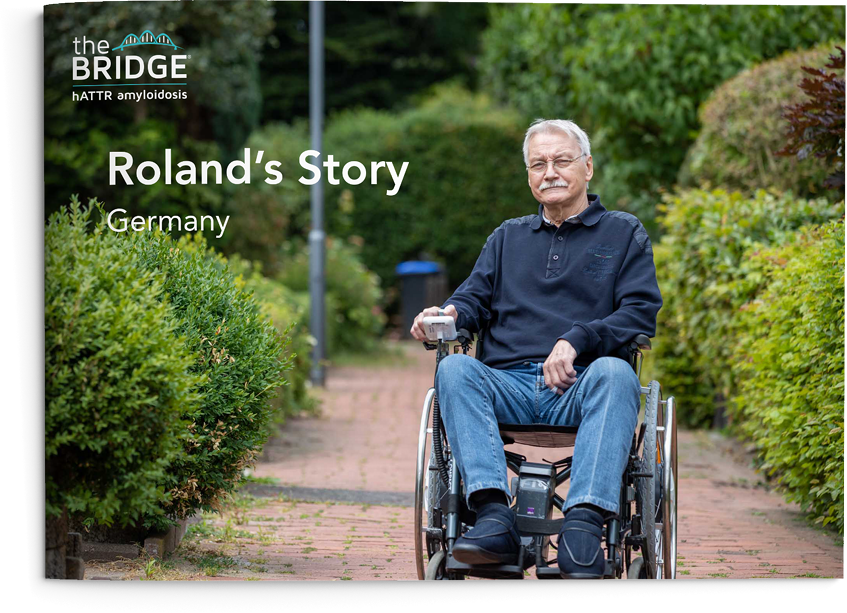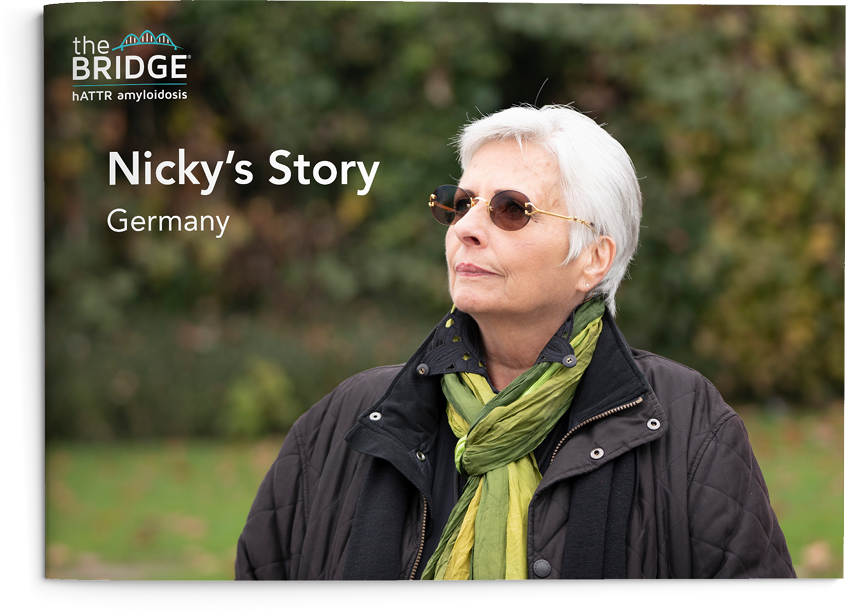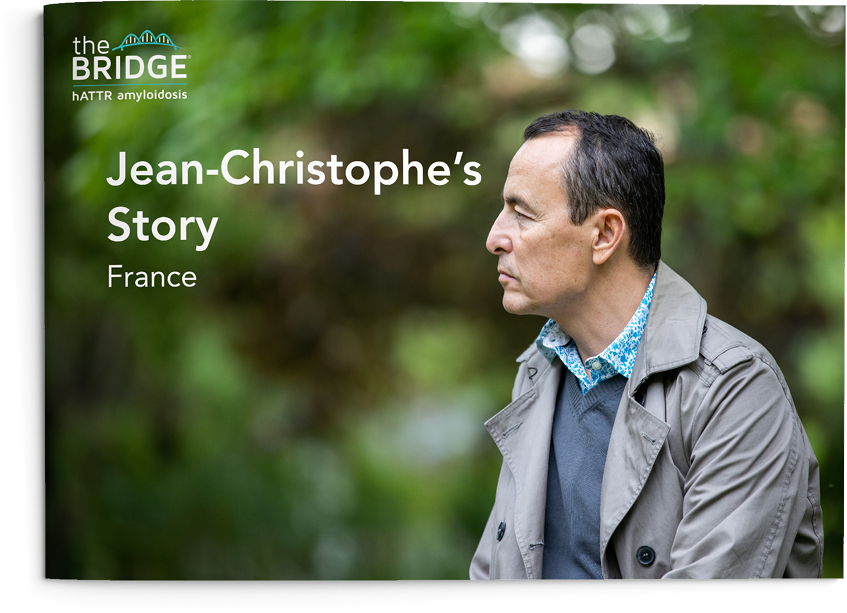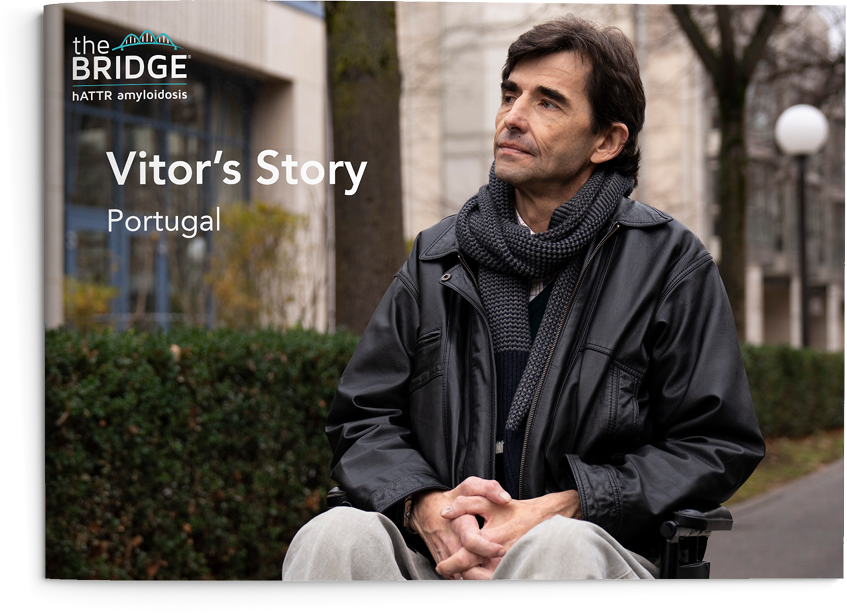Patient Stories
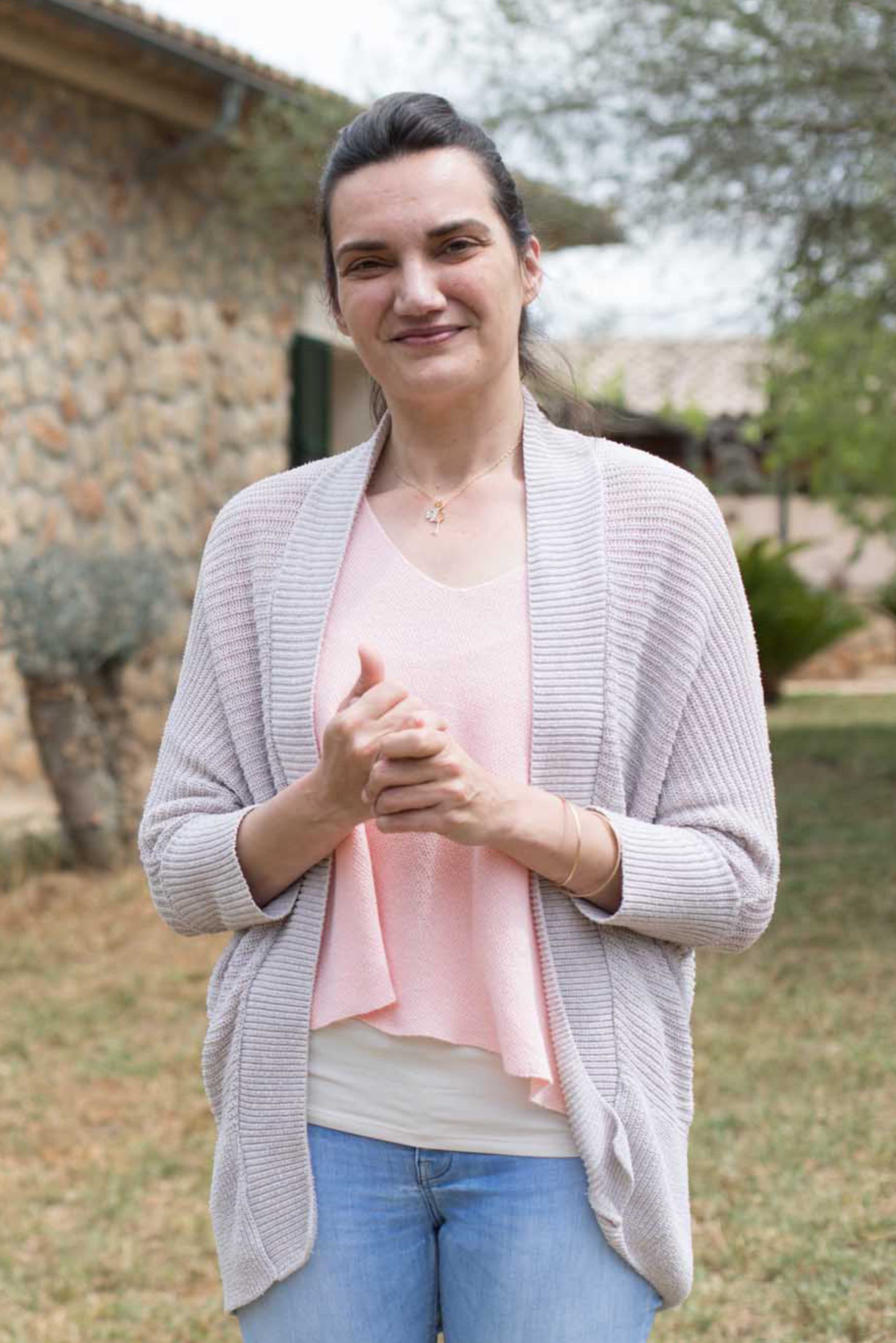
Hello, everyone. My name is Catilena, and I am from the beautiful island of Mallorca. I would like to tell you my story—a story from my heart, the story of my life. As I share this story, I hope to set free the feelings that have been locked up so tightly in my heart, so I’d like to thank Alnylam Pharmaceuticals for sponsoring and supporting me to share my story of living with hATTR amyloidosis.
When I was 18, I discovered that I had an inheritance. I’m sure when you hear the word “inheritance,” you may imagine a large amount of money or properties, but no. My inheritance is different, and it’s called hereditary ATTR amyloidosis, a genetic mutation that accumulates amyloid deposits in the tissues. My mother was diagnosed with this disease back in 1998, and through a genetic test, we learned that my grandfather had died from the same condition. At that time I learned I was also a carrier and could develop the disease in the future.
But first, let me start from the beginning. I was a little girl when my grandfather’s symptoms became worse, and I spent many days with my grandmother as she looked after him. I helped feed him, and my mother even said that when I was five years old, I insisted on helping my grandfather walk, which resulted in him falling on top of me more than once.
As I grew older, I always played doctors and nurses with my friends and dolls, and some Saturdays I volunteered at a mental health centre. I stayed busy—I had a very full social life, and sometimes I needed more time in the day! When it was time for me to decide on a career to study, I was torn between nursing or physiotherapy. It was clear to me that I wanted a career where I could help and care for people, so I decided to study physiotherapy. After finishing my studies, I worked in a geriatric centre for 10 years, specialising in the physical rehabilitation of the elderly.
It was during this time that I first learned of my “inheritance.” For a moment, fear consumed my body—fear of symptoms, fear of needing a liver transplant, fear of the unknown. However, I was so young that my head thought about other, more fun things—like parties, boyfriends, and socialising. Plus, I was completely unaware of my mother’s disease, or rather, what my future disease really entailed.
I became more aware of the disease when my husband and I began thinking about starting a family. I didn’t want to transmit this “inheritance” to my offspring, so in order to get pregnant without the possibility of transmission, I chose pre-implantation with genetic selection. I had two attempts but, unfortunately, neither was successful. This has been one of the more difficult parts of my journey. However, as I always say, everything happens for a reason because two years later, I started having some symptoms.
In the beginning, I experienced only mild symptoms, such as tingling in my feet. Then I started waking up in the middle of the night because my hands had gone numb. The disease was beginning to manifest, but all of my tests showed I was within a normal range, and otherwise, I felt good.
For a long time, I was carrying my disease secretly—nobody knew anything apart from my husband because, at the same time, the condition was taking my mother. She had received a liver transplant a few years earlier and was stable until the disease began to progress again in 2014. It continued to progress to her heart and brain, and her symptoms got worse and worse. She suffered from faecal incontinence, renal insufficiency, cognitive impairment, and eventually, the loss of mobility. My mother needed help for all of her daily activities.
I have very bad memories of that time. My father and I were her main caregivers. He took care of my mum in the morning before going to work, and I would take care of her as soon as my work was over. I stayed with my mother every evening and weekend. I showered her, prepared her medication, laid her on her bed, and we shared many meals together. On Saturdays, we did our weekly supermarket shopping together. It was such fun! I hadn’t much time to spend with my husband or friends, but I knew it was the last year of my mother’s life, and I was very happy to spend all of my time with her.
As I watched my mother die of this disease—and how she was dying—my own symptoms were quickly growing worse. More and more, I just wanted to disappear from the world and pretend that nothing was happening. My initial symptoms kept worsening—I started to lose the sensation in my feet, my fingers went numb, and I didn’t feel anything when somebody pricked them with a needle. Plus I could no longer differentiate between hot and cold water. My health continued to decline, and I began to experience digestive problems—alternating between periods of constipation and diarrhoea. My torture! During work, I would have to leave meetings as if someone had called my phone. I never felt like I was able to tell my co-workers that I was not feeling well and needed to go to the toilet.
Sadly, my mother suffered from two vascular brain strokes and various epileptic attacks and passed away when she was only 56 years old. The day after her funeral, my doctor confirmed that my last electromyogram and rectal biopsy were positive for hATTR. You can just imagine what it was like when I arrived home and I told my father, “Papa, Mum has gone, but the disease hasn’t. I’m not a caregiver anymore—now I have become the patient.” We embraced very tightly and cried together for at least an hour. He said, “Catilena, I know this condition very well, but now you have to be strong, and I know you will be.” Of course, my father is always worried about me. But from that moment on, I stopped living with the disease in silence, and I decided to tell my friends, family, and co-workers.
My boss could not have been more understanding. She is a doctor, so she understood my situation perfectly and offered me a new job to better suit my circumstances. My new job included a flexible schedule, an office with a private toilet, and days I could even work from home. Sadly, my company closed down a year and a half later, and the new owners didn’t understand my special conditions. But I will always consider myself lucky for having had co-workers who were extremely understanding, and I even keep in touch with one very special friend, a nurse, who has helped me a lot.
Coming to terms with this disease is not easy. In fact, I always say that I haven’t accepted this disease but instead have learned to live with it. Fortunately, I had a great example in my mother. She taught me three of the most important things when it comes to living with this condition. First, to smile and to share your smile with others. Second, to always pack a survival kit with your essentials, like spare clothes and medication. And third, to enjoy every possible moment, especially the simple things, such as waking up each morning feeling grateful to be alive.
All of my life, I have looked after people—my grandfather, my mother, and those during my career—and I have learned that it is time to take care of myself. Today, I dedicate my efforts to spending time with my wonderful husband, walking our dogs, practising yoga and Pilates, and working with the Balearic Association for Hereditary ATTR Amyloidosis. I am also studying project management at university to help me one day secure a job that I will love and enjoy.
In many ways, my mother and grandfather taught me to accept the ways of life without getting angry. With every generation, the treatment of this disease has changed. My grandfather did not have any treatment options, and my mother had a late diagnosis and liver transplant. My father believes I will have more luck, and I choose to believe this, too.
I hope by sharing my own story I have brought honour to my mother. Many times, my mother wanted to talk about her disease and share her own story with me, but I didn’t want to hear anything about it—I was too scared. Sadly, she passed away before we were ever able to share our feelings, which is why I wanted to share with you today. My hope is that by giving a voice to this disease, I will help other people feel loved and bring an awareness to amyloidosis.
Thank you.
